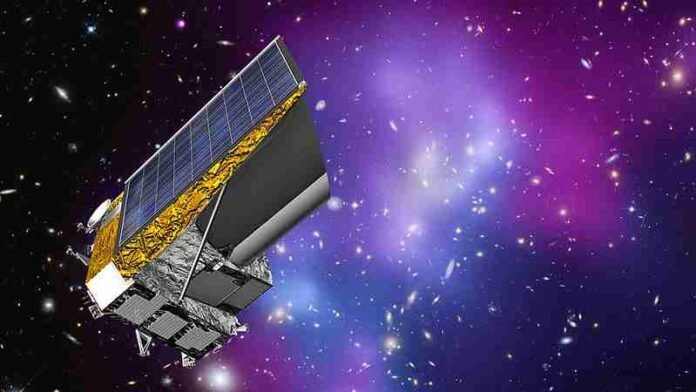The European Space Agency (ESA) released the first images obtained by Euclid space telescope, which investigates the dark universe.
More information about EuclidClick here
Source: Phys.org
The Euclid mission, which will investigate the mysteries of dark matter and dark energy, released its first five science images Tuesday, Nov. 7. The observatory, led by ESA (European Space Agency) with NASA contributions, is scheduled to begin regular science operations in early 2024.
“Together, NASA and ESA are paving the way for a new era of cosmology for NASA’s forthcoming Nancy Grace Roman Space Telescope, which will build upon what Euclid learns and will additionally survey objects on the outskirts of our solar system, discover thousands of new planets, explore nearby galaxies, and more.”, said Nicola Fox, associate administrator, Science Mission Directorate, at NASA Headquarters in Washington.
NASA’s Jet Propulsion Laboratory in Southern California delivered critical hardware for one of the Euclid spacecraft’s instruments. In addition, NASA has established a U.S.-based Euclid science data center, and NASA science teams will join other Euclid scientists in studying dark energy, galaxy evolution, and dark matter.
The Nancy Grace Roman mission will also study dark energy and will be complementary to Euclid.
During its planned six-year mission, Euclid will produce the most extensive 3D map of the universe yet, covering nearly one-third of the sky and containing billions of galaxies up to 10 billion light-years away from Earth.
To do this, Euclid needs a wide field of view, which enabled these new images covering a relatively large area. In this way, Euclid differs from targeted observatories like NASA’s James Webb Space Telescope that focus on a smaller area of the sky at any one time but typically offer higher-resolution images. Wide-field observatories like Euclid can observe large sections of the sky much faster than targeted telescopes. In addition, Euclid has high resolution compared to previous survey missions, which means it will be able to see more galaxies in each image than previous telescopes.
Dark matter is five times more common in the cosmos than regular matter, so if dark energy’s expansive influence on the universe has changed over time, the change should be recorded in how dark matter is distributed on large scales across the universe, and Euclid’s 3D map should capture it.
NASA’s Roman mission will study a smaller section of sky than Euclid, but it will provide higher-resolution images of hundreds of millions of galaxies and peer deeper into the universe’s past, providing complementary information. Scheduled to launch by May 2027.
Images obtained by Euclid
All the images shown are from the same news source.








